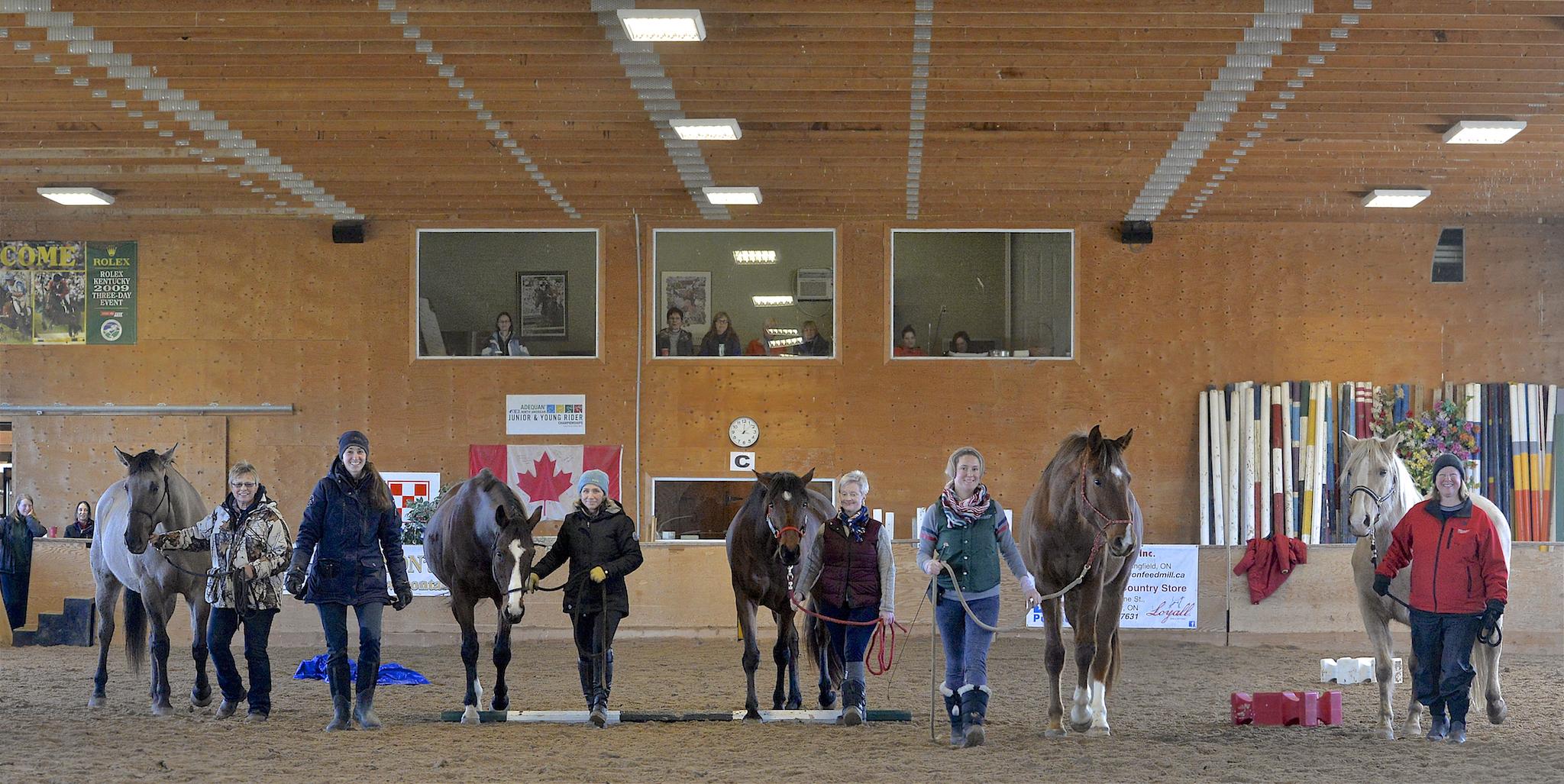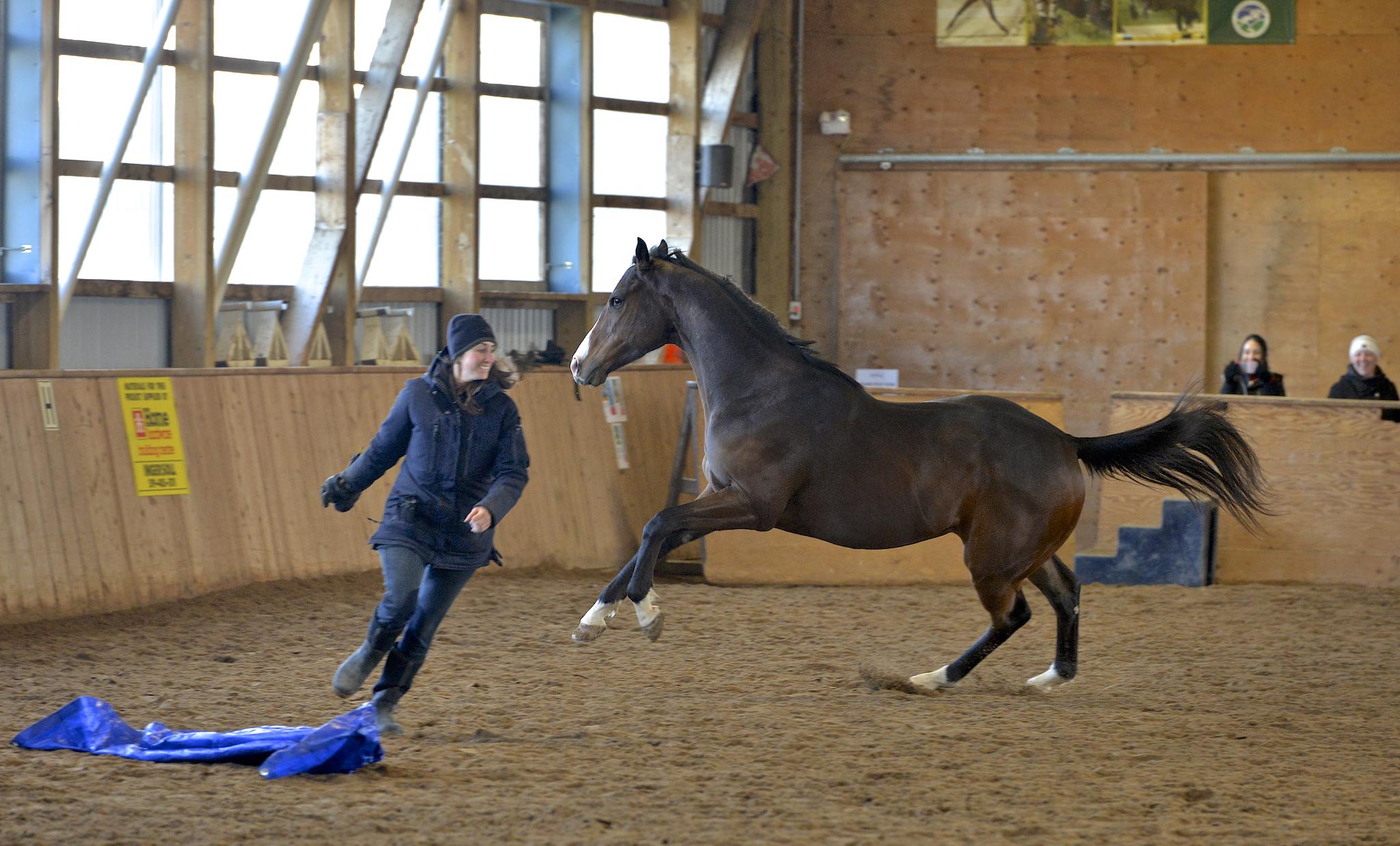
A Clinic With Canada’s Horse Whisperer: Lindsey Partridge & Harmony Horsemanship 101
Reader Suzanna O’Connor reports on the Harmony Horsemanship 101 clinic she attended, taught by “Canada’s Horse Whisperer” Lindsey Partridge.
Sprucehaven Farm in Ingersoll, Ontario, Canada hosted a two day clinic with Lindsey Partridge, dubbed “Canada’s Horse Whisperer” by the Toronto Star newspaper. Partridge is the 2015 Thoroughbred Makeover champion and Trail champion and the 2016 Thoroughbred Makeover Trail and Freestyle champion as well as the only trainer to have both of her horses qualify for the finals in both disciplines.
Here’s Patridge’s 2016 winning Freestyle performance:
Dating Your Horse
The rider/horse relationship is like an arranged marriage. The human usually picks the horse but the horse doesn’t get a say in the matter. Like dating, the two of you need to establish a calm connection. You and your horse need to move together, to match energy and do stuff that is mutually enjoyable.
Calm Connection
From rearing to quiet and happy in only a few minutes.
A young horse with an experienced handler came into the arena in a highly anxious state. After a few minutes of practicing the Square Exercise, which is basically walking your horse in a small square, the horse was blinking, breathing and in a relaxed state. At the end of the session, when the other horses had left the ring, Partridge played with him for a bit, performing a mirroring exercise. He went from excited running to a calm connection in only a few minutes.
The “Yes” Horse
Ask. Tell. Wait. Clarify. Motivate or Adjust.
Wait: For the horse who is “not sure”. Give them time to assess and problem solve.
Clarify: For the horse who doesn’t understand what you want.
Motivate: For the horse who just doesn’t want to do it.
Adjust: For the horse who says “I can’t” (e.g. lower the rail for the horse who can’t jump)
Partridge uses positive reinforcement as her chief tool in creating a “yes” horse. The guideline is that it has to be something the horse wants and that can change from moment to moment and day to day. It could be treats, rubs, scratches, investigating something by touching or exploring, grazing, rest (just don’t do it in the same spot), energy or many other things. The human needs to become expert at observing their horse to see what it really wants and needs in the moment. All horses have differences. You need to respond to your horse’s needs.
Horses started with very easy “asks” and then moved on to more challenging stuff, like walking across tarpaulins both being led and while mounted. Because they had established a calm connection with their riders and were learning to say “yes,” horses who had been afraid of objects like tarps or artificial flowers were relaxed and happy around these objects at the end of the day.
After this two day introduction of Harmony Horsemanship 101, several riders declared that they are interested in taking a course with Lindsey Partridge, either online or at her farm.
Find Lindsey Partridge online:










Leave a Comment